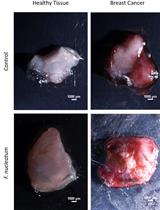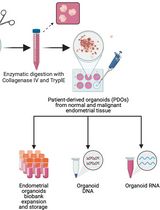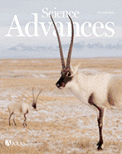- Submit a Protocol
- Receive Our Alerts
- Log in
- /
- Sign up
- My Bio Page
- Edit My Profile
- Change Password
- Log Out
- EN
- EN - English
- CN - 中文
- Protocols
- Articles and Issues
- For Authors
- About
- Become a Reviewer
- EN - English
- CN - 中文
- Home
- Protocols
- Articles and Issues
- For Authors
- About
- Become a Reviewer
Preparation of an Orthotopic, Syngeneic Model of Lung Adenocarcinoma and the Testing of the Antitumor Efficacy of Poly(2-oxazoline) Formulation of Chemo-and Immunotherapeutic Agents
Published: Vol 11, Iss 6, Mar 20, 2021 DOI: 10.21769/BioProtoc.3953 Views: 7305
Reviewed by: Aleksei A Tikhonovxiang luoLiang Wang

Protocol Collections
Comprehensive collections of detailed, peer-reviewed protocols focusing on specific topics
Related protocols

Multiphoton Microscopy of FITC-labelled Fusobacterium nucleatum in a Mouse in vivo Model of Breast Cancer
Lishay Parhi [...] Gilad Bachrach
Mar 20, 2023 1386 Views

Generation and Maintenance of Patient-Derived Endometrial Cancer Organoids
Mali Barbi [...] Semir Beyaz
Oct 20, 2024 1976 Views

Temporally and Spatially Controlled Age-Related Prostate Cancer Model in Mice
Sen Liu [...] Qiuyang Zhang
Jan 5, 2025 2599 Views
Abstract
Tumor xenograft models developed by transplanting human tissues or cells into immune-deficient mice are widely used to study human cancer response to drug candidates. However, immune-deficient mice are unfit for investigating the effect of immunotherapeutic agents on the host immune response to cancer (Morgan, 2012). Here, we describe the preparation of an orthotopic, syngeneic model of lung adenocarcinoma (LUAD), a subtype of non-small cell lung cancer (NSCLC), to study the antitumor effect of chemo and immunotherapeutic agents in an immune-competent animal. The tumor model is developed by implanting 344SQ LUAD cells derived from the metastases of KrasG12D; p53R172HΔG genetically engineered mouse model into the left lung of a syngeneic host (Sv/129). The 344SQ LUAD model offers several advantages over other models: 1) The immune-competent host allows for the assessment of the biologic effects of immune-modulating agents; 2) The pathophysiological features of the human disease are preserved due to the orthotopic approach; 3) Predisposition of the tumor to metastasize facilitates the study of therapeutic effects on primary tumor as well as the metastases (Chen et al., 2014). Furthermore, we also describe a treatment strategy based on Poly(2-oxazoline) micelles that has been shown to be effective in this difficult-to-treat tumor model (Vinod et al., 2020b).
Keywords: XenograftBackground
NSCLC has a poor prognosis because most patients have advanced stage of cancer at the time of diagnosis, and patients with early-stage tumors are very likely to encounter post-surgical metastasis and recurrence (Zappa and Mousa, 2016; Renaud et al., 2016). Transplanted tumors grown subcutaneously in immune-deficient nude mice do not faithfully recapitulate the metastatic disease, and therefore, better models are needed (Manzotti et al., 1993). The 344SQ LUAD cell line forms spontaneous metastasis due to the suppression of the microRNA-200 (miR-200) expression, resulting in an epithelial-mesenchymal transition (EMT) phenotype having increased motility (Chen et al., 2014). Moreover, with a considerably low number of tumor-infiltrating cytotoxic T lymphocytes, the Kras/p53 mutant LUAD model exhibits an 'immunologically cold' phenotype. The low number of anticancer lymphocytes renders it less receptive to treatments like anti-PD1 that depends on pre-existing T cells, making it an ideal model to test alternative strategies for the treatment of “immunologically cold tumors” (Pfirschke et al., 2016; Espinosa et al., 2017).
Platinum-based chemotherapy is a standard of care in NSCLC. However, acquired resistance to platinum drugs presents a serious challenge in NSCLC management (Galluzzi et al., 2012). Here, we describe a procedure to adopt the Poly(2-oxazoline) (POx)-based nanomicelle formulation strategy for the coadministration of agents that reverse drug resistance (a.k.a. chemosensitizers) with platinum drugs and assess their efficacy in the LUAD model of NSCLC. Further, we describe an immunotherapeutic approach for treating LUAD by using POx micelle formulation of a small molecule biologic response modifier, Resiquimod (administered alone or in combination with checkpoint blockade therapy). POx micelle formulation of poorly soluble drugs has been previously demonstrated to be safe and effective in various tumor models (He et al., 2016). POx micelles are easy to prepare (Vinod et al., 2020a) and can be used to solubilize a broad range of poorly soluble compounds for drug delivery applications.
Materials and Reagents
Alcohol swab (B.D. Biosciences)
Nair hair removal cream
Cotton swab
Sterile gauze pads
Tuberculin syringe (B.D. Biosciences)
344SQ-green fluorescent protein/Firefly luciferase (GFP/fLuc) cells (source: J. Kurie, MD Anderson Cancer Center)
Hanks' Balanced Salt solution (Gibco)
Matrigel (Corning)
D-luciferin (PerkinElmer)
1× DPBS (Gibco)
Isofluorane (VetOne)
Ketamine (Vedco)
Xylazine (Acorn animal health)
Acepromazine (Vedco)
Anesthetic cocktail (see Recipes)
Note: Refer to Vinod et al. (2020a) (protocol based exclusively on Poly(2-oxazoline) preparation for reagents for Sections C and D.
Equipment
Surgical instruments
Autoclip Wound Closing System – Staples + Applier (Braintree Scientific, Inc)
Iris Surgical Scissors, 4½ inch, curved (Fisher Scientific)
Delicate Specialty Dissection Forceps, Serrated, 5" (Fisher Scientific)
IVIS-Lumina II optical imaging system (PerkinElmer Inc., Hopkinton, MA)
Small Animal induction chamber
Software
Living Image® software
Procedure
Preparation of animal tumor model of NSCLC
Prepare a suspension of 344SQ-green fluorescent protein (GFP)/fLuc cells in 50% Hanks' Balanced Salt Solution and 50% Matrigel (v/v).
Anesthetize the mice by injecting the anesthetizing cocktail intraperitoneally and lay it in the right lateral decubitus position.
Apply hair removal cream using cotton swab in the chest area and leave for 1 min (be sure not to exceed 1 min to avoid giving the mice a chemical burn). Wipe away with dry sterile gauze pad. Use damp sterile gauze pad to remove any residual cream.
Clean the skin surface with an alcohol swab and make an incision between ribs 10 and 11 by placing the blade parallel to the rib cage (see Figure 1A).
Transfer the cell suspension to a 1-ml tuberculin syringe and inject 50 μl of 2.5 × 103-5 × 103 cells into the left lung parenchyma in the lateral dorsal axillary line (see Figure 1B).
Close the incision using wound closure clips and place the animal in the left lateral decubitus position until recovery.
Note: Day 1 is defined as the day of tumor inoculation.

Figure 1. Schematic showing the site of incision (A) and the site of orthotopic injection (B)
Bioluminescence imaging
Inject 150 mg/kg of 15 mg/ml (in 1× DPBS) D-luciferin solution intraperitoneally and start imaging after 15 min.
Anesthetize the mice by placing them in an inhalation induction chamber (for ~5 min) comprising 2-3% isoflurane in oxygen.
Place the anesthetized animals in the sample stage of the imaging chamber of the IVIS lumina optical imaging system in the supine position.
Acquire luminescent images using the following acquisition settings in the Living Image® software:
Pixel Width: 1
Pixel Height: 1
Image units: counts
Luminescent exposure (seconds): 60
Field of view: 24
Emission filter: open
Subject size: 1.5
Note: Bioluminescence imaging (B.L.I.) is done once prior to the commencement of the treatments to obtain baseline bioluminescence to confirm the presence of the tumor. Following the start of treatments (Day 8), B.L.I. is performed once every week to monitor tumor growth.
Chemotherapy in conjunction with chemosensitizers
Randomize mice into four groups of 10 mice each
Administer a total of 4 doses (on days 8, 12, 15, and 19) of either of the formulations intravenously (unless indicated otherwise):
Normal saline (volume: 100-200 μl).
C6CP/AZD7762 PM (POx micelles; coloaded with C6CP and AZD7762 at a weight ratio of 10/20, yielding a final dose of 10 mg/kg of C6CP and 20 mg/kg of AZD7762).
C6CP/VE-822 PM (POx micelles; coloaded with C6CP and VE-822 at a weight ratio of 10/10, yielding a final dose of 10 mg/kg of C6CP and 10 mg/kg of VE-822).
Anti-PD-1 antibody (250 μg per mouse; administered intraperitoneally).
Immunotherapy alone and in combination with immune checkpoint blockade
Randomize mice into four groups of 13 mice each.
Administer a total of 4 doses (on days 8, 12, 15, and 19) of either of the formulations intravenously (unless indicated otherwise):
Normal saline (volume: 100-200 μl).
Resiquimod PM (5 mg/kg).
Anti-PD-1 antibody (250 μg per mouse; administered intraperitoneally and continued after day 17 for four more times – days 22, 26, 29, and 33).
Note: Since the mice in this group reached the study endpoint before day 33, they did not receive the fourth dose.
Resiquimod PM (5 mg/kg) + anti-PD-1 (250 μg per mouse; administered intraperitoneally and continued after day 17 for four more times – days 22, 26, 29, and 33).
Data analysis
Analyze the B.L.I. data by specifying a region of interest outlining the tumor and quantify the total radiance using Living Image Software to measure the luciferase activity, which is representative of the tumor burden. Refer to Vinod et al. (2020b) for representative BLI images.
Recipes
Anesthetic cocktail
To prepare the anesthetic cocktail, dilute stock solutions of Ketamine, Xylazine and Acepromazine in 1× DPBS and administer 100 μl of the cocktail per 10 g of mouse body weight. Use the following doses of each anesthetic:
Ketamine: 80 mg/kg (stock conc. 100 mg/ml)
Xylazine: 8 mg/kg (stock conc. 100 mg/ml)
Acepromazine: 1 mg/kg (stock conc. 10 mg/ml)
Acknowledgments
The original work (Vinod et al., 2020b) was funded by the National Cancer Institute (NCI) Alliance for Nanotechnology in Cancer (U54CA198999, Carolina Center of Cancer Nanotechnology Excellence).
Competing interests
A.V.K. is co-inventor on patents pertinent to the subject matter of the present contribution and A.V.K. and M.S.P. have co-founders' interest in DelAqua Pharmaceuticals Inc. having intent of commercial development of POx based drug formulations. The other authors have no competing interests to report.
Ethics
The protocol (IACUC# 18-174) was approved by The University of North Carolina at Chapel Hill Institutional Animal Care and Use Committee. The validity period of IACUC# 18-174 is of 3 years.
References
- Chen, L., Gibbons, D. L., Goswami, S., Cortez, M. A., Ahn Y. H., Byers, L. A., Zhang, X., Yi, X., Dwyer, D., Lin, W., Diao, L., Wang, J., Roybal, J. D., Patel, M., Ungewiss, C., Peng, D., Antonia, S., Mediavilla-Varela, M., Robertson, G., Jones, S., Suraokar, M., Welsh, J. W., Erez, B., Wistuba, I. I., Chen, L., Peng, D., Wang, S., Ullrich, S. E., Heymach, J. V., Kurie, J. M., Qin, F. X.-F. (2014). Metastasis is regulated via microRNA-200/ZEB1 axis control of tumour cell PD-L1 expression and intratumoral immunosuppression. Nat Commun 5: 5241.
- Espinosa, E., Marquez-Rodas, I., Soria, A., Berrocal, A., Manzano, J. L., Gonzalez-Cao, M., Martin-Algarra, S. and Spanish Melanoma, G. (2017). Predictive factors of response to immunotherapy-a review from the Spanish Melanoma Group (GEM).Ann Transl Med 5(19): 389.
- Galluzzi, L., Senovilla, L., Vitale, I., Michels, J., Martins, I., Kepp, O., Castedo, M. and Kroemer, G. (2012). Molecular mechanisms of cisplatin resistance. Oncogene 31(15): 1869-1883.
- He, Z., Wan, X., Schulz, A., Bludau, H., Dobrovolskaia, M. A., Stern, S. T., Montgomery, S. A., Yuan, H., Li, Z., Alakhova, D., Sokolsky, M., Darr, D. B., Perou, C. M., Jordan, R., Luxenhofer, R. and Kabanov, A. V. (2016). A high capacity polymeric micelle of paclitaxel: Implication of high dose drug therapy to safety and in vivo anticancer activity. Biomaterials 101: 296-309.
- Manzotti, C., Audisio, R. A. and Pratesi, G. (1993). Importance of orthotopic implantation for human tumors as model systems: relevance to metastasis and invasion. Clin Exp Metastasis 11(1): 5-14.
- Morgan, R. A. (2012). Human tumor xenografts: the good, the bad, and the ugly. Mol Ther 20(5): 882-884.
- Pfirschke, C., Engblom, C., Rickelt, S., Cortez-Retamozo, V., Garris, C., Pucci, F., Yamazaki, T., Poirier-Colame, V., Newton, A., Redouane, Y., Lin, Y. J., Wojtkiewicz, G., Iwamoto, Y., Mino-Kenudson, M., Huynh, T. G., Hynes, R. O., Freeman, G. J., Kroemer, G., Zitvogel, L., Weissleder, R. and Pittet, M. J. (2016). Immunogenic Chemotherapy Sensitizes Tumors to Checkpoint Blockade Therapy. Immunity 44(2): 343-354.
- Renaud, S., Seitlinger, J., Falcoz, P. E., Schaeffer, M., Voegeli, A. C., Legrain, M., Beau-Faller, M. and Massard, G. (2016). Specific KRAS amino acid substitutions and EGFR mutations predict site-specific recurrence and metastasis following non-small-cell lung cancer surgery. Br J Cancer 115(3): 346-353.
- Vinod, N., Hwang, D., Azam, S. H., Van Swearingen, A. E. D., Wayne, E., Fussell, S. C., Sokolsky-Papkov, M., Pecot, C. V. and Kabanov, A. V. (2020a). Preparation and characterization of Poly(2-oxazoline) micelles for the solubilization and delivery of sparingly water-soluble drugs. Bio-protocol (unpublished).
- Vinod, N., Hwang, D., Azam, S. H., Van Swearingen, A. E. D., Wayne, E., Fussell, S. C., Sokolsky-Papkov, M., Pecot, C. V. and Kabanov, A. V. (2020b). High-capacity poly(2-oxazoline) formulation of TLR 7/8 agonist extends survival in a chemo-insensitive, metastatic model of lung adenocarcinoma. Sci Adv 6(25): eaba5542.
- Zappa, C. and Mousa, S. A. (2016). Non-small cell lung cancer: current treatment and future advances. Transl Lung Cancer Res 5(3): 288-300.
Article Information
Copyright
© 2021 The Authors; exclusive licensee Bio-protocol LLC.
How to cite
Readers should cite both the Bio-protocol article and the original research article where this protocol was used:
- Vinod, N., Hwang, D., Azam, S. H., Van Swearingen, A. E. D., Wayne, E., Fussell, S. C., Sokolsky-Papkov, M., Pecot, C. V. and Kabanov, A. V. (2021). Preparation of an Orthotopic, Syngeneic Model of Lung Adenocarcinoma and the Testing of the Antitumor Efficacy of Poly(2-oxazoline) Formulation of Chemo-and Immunotherapeutic Agents. Bio-protocol 11(6): e3953. DOI: 10.21769/BioProtoc.3953.
- Vinod, N., Hwang, D., Azam, S. H., Van Swearingen, A. E. D., Wayne, E., Fussell, S. C., Sokolsky-Papkov, M., Pecot, C. V. and Kabanov, A. V. (2020b). High-capacity poly(2-oxazoline) formulation of TLR 7/8 agonist extends survival in a chemo-insensitive, metastatic model of lung adenocarcinoma. Sci Adv 6(25): eaba5542.
Category
Cancer Biology > General technique > Animal models
Do you have any questions about this protocol?
Post your question to gather feedback from the community. We will also invite the authors of this article to respond.
Share
Bluesky
X
Copy link










